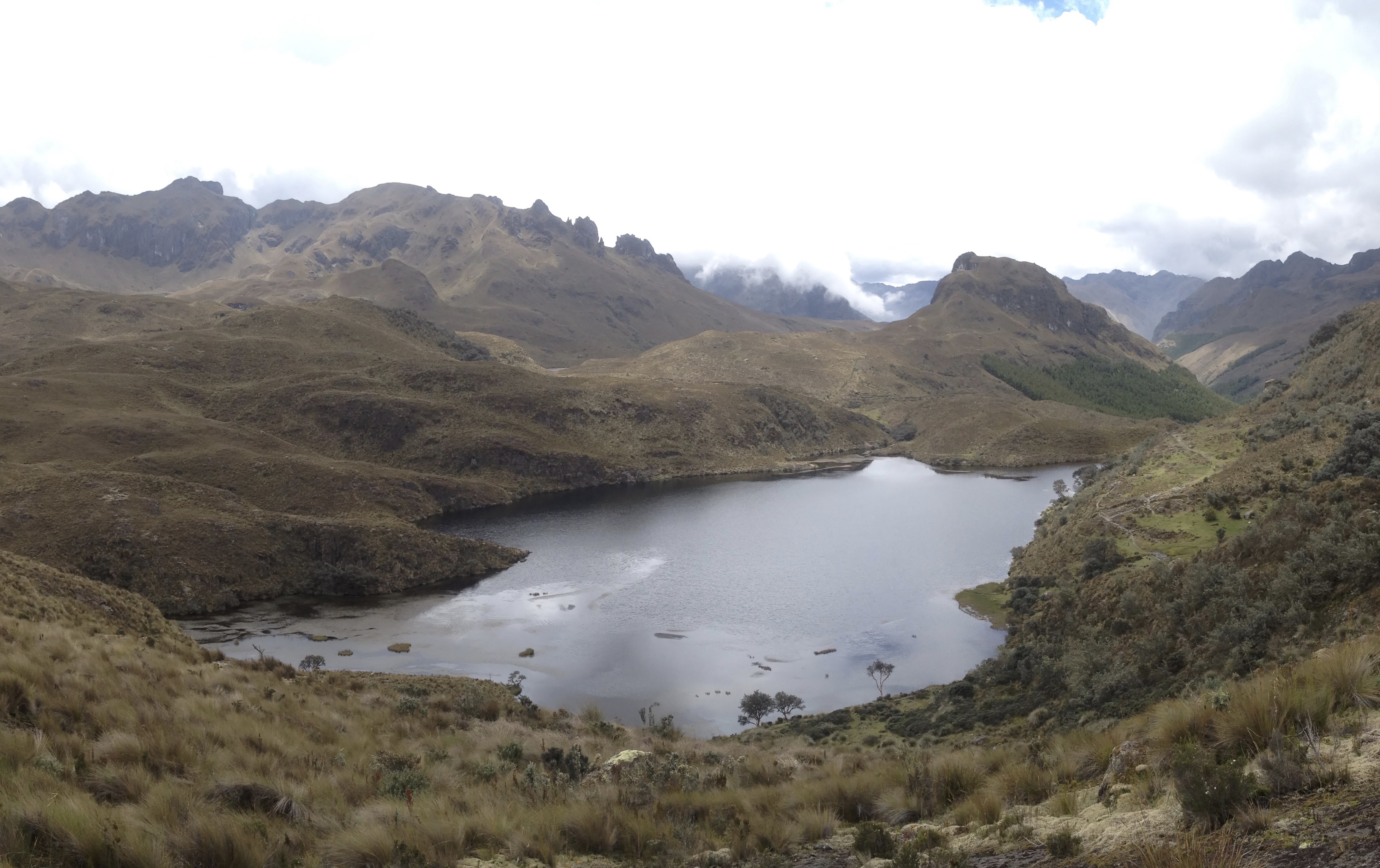
“Bleak” and “wintry” aren’t usually descriptions that apply to my experiences in Ecuador. The jungles of the Amazon region were oppressively hot, and the cities of Quito, Cuenca and Cañar have all been warm and sunny most of the time. However, I barely saw the sun at all during my group’s visit to Cajas National Park, a bitterly cold patch of tundra located 30 miles west of my warm home in Cuenca.
The average temperature in Cajas is between 8 and 12 degrees Celsius (or between 46.4 and 53.6 degrees Fahrenheit), which feels especially nippy after spending three months in the balmy suns of Cuenca. It’s no surprise that the park used to be dominated by colossal glaciers, which melted into silver lagoons millions of years ago. Instead of ice and snow, the region is now dominated by beige shrubbery and spongy mosses. The charcoal-grey rock formations surrounding the park are ensconced in a thick layer of clouds. I feel as though I’m walking through some far-off corner of Middle Earth, instead of a national park close to the equator.
Much of the flora and fauna found elsewhere in Ecuador cannot endure the cold temperatures at Cajas. However, the plant life that does grow here has developed several remarkable coping mechanisms in order to survive. One of the most successful and bizarre plants that grows in Cajas is the polylepis, or quinoa tree.
The name “quinoa tree” is misleading because this tree doesn’t grow quinoa at all; the name comes from the distinctive ruddy-brown bark that covers their trunks, which is the color of red quinoa. Quinoa trees constantly shed their bark so that mushrooms and other parasitic fungi cannot grow on them and sap their nutrients. Consequently, these trees have also earned the nickname “tourist trees,” because their skin is constantly peeling off in flaky red chunks, much like the skin of a sunburnt tourist. I imagine I would find this name funnier if I hadn’t recently recovered from a sunburn myself.
The survival tactics of these quinoa trees have worked remarkably well: our guide informs us that some of the specimens in Cajas are estimated to be over 300 years old. If these estimates are correct, the trees here could be older the nation of Ecuador itself, which first achieved independence from Spain a mere 195 years ago.
Before Ecuador became its own nation in 1822 (and long before Cajas was declared a national park in 1996), the Cañari and other indigenous people traveled through the region to transport goods from city to city. The frigid temperatures claimed the lives of many traders, and not many plants and animals could survive the chilly tundra either. Today, three stone crosses are erected at the entrance of the park in memory of those who lost their lives traveling through the area in the past.
Looking at the stone crosses, I shudder at the thought of perishing alone in this frigid wilderness. It may have been painful when my sunburn peeled like the bark of a quinoa tree, but at least I didn’t freeze next to the park’s icy lagoons.
This piece concludes a series of articles about my experiences studying abroad in Ecuador. After the Lewis & Clark program ends on April 15, I will stay in Cuenca for an additional month as a full-time volunteer at the Amaru Zoo. To read about my previous experiences at the zoo, click here:
https://piolog.com/2017/03/12/adventures-abroad-a-days-work-at-the-amaru-zoo/
Adventures at the Earth’s Center:
https://piolog.com/2017/02/17/ecuador-abroad-adventures-at-the-earths-center/
Expedition into the Kingdom of Spiders:
https://piolog.com/2017/03/01/adventure-abroad-expedition-into-the-kingdom-of-spiders/
Encounters with the natural and spiritual in Cañar, Ecuador:
Subscribe to the Mossy Log Newsletter
Stay up to date with the goings-on at Lewis & Clark! Get the top stories or your favorite section delivered to your inbox whenever we release a new issue.

Leave a Reply